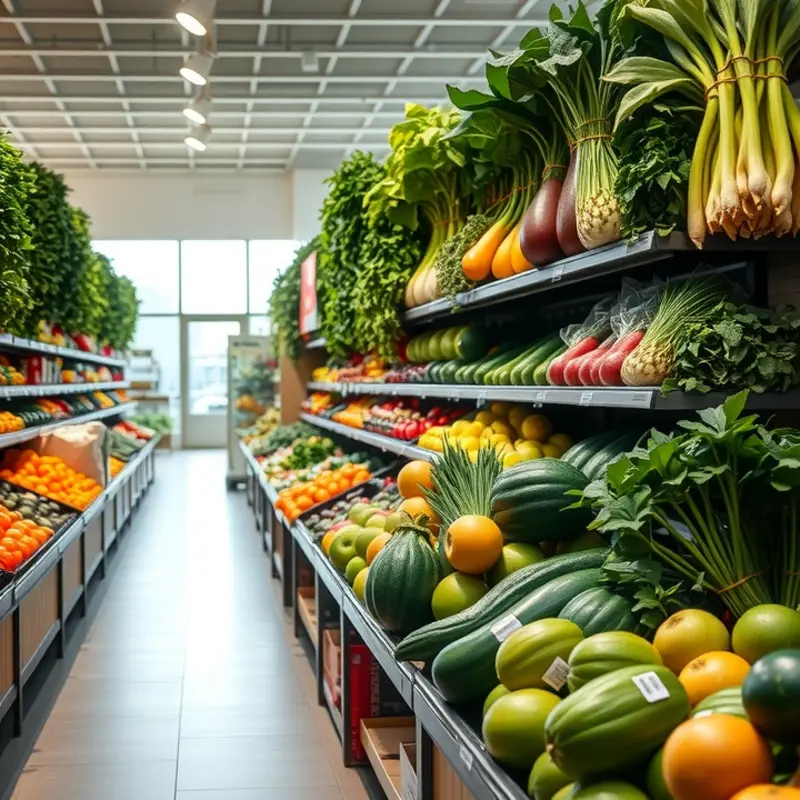Grocery shopping can be an overwhelming experience, especially for those embarking on a health-focused lifestyle. With aisles filled with options, it’s easy to feel lost among the choices. Learning how to shop mindfully can empower you to make healthier selections that align with your nutrition goals. In this guide, we’ll explore practical tips that can help simplify your shopping process and enhance your approach to nutrition.
Crafting Your Healthy Grocery List

Creating a thoughtful grocery list sets the stage for mindful shopping, and the key is preparation. Start with meal planning. Consider your nutritional needs and preferences. Opt for a balance of macronutrients: proteins, carbohydrates, and healthy fats. Planning also involves leveraging seasonal produce, which is often more affordable and nutritious.
When planning meals, think about variety. Incorporate different colors and textures to ensure you’re getting a broad spectrum of nutrients. For instance, aim to include leafy greens, vibrant peppers, and whole grains to cater to various dietary needs. A good starting point is to use resources like easy plant-based eating if you’re leaning towards a plant-forward diet.
Understanding nutrition labels is vital. Look for foods low in added sugars and saturated fats. Check for high fiber content to support digestive health and maintain satiety. Pay attention to serving sizes on packaging to avoid misleading labels. Foods rich in essential vitamins and minerals, such as whole grains, legumes, and nuts, should hold a prominent place on your list.
Whole foods should form the core of your grocery list. These are minimally processed and offer the most nutrients per calorie. Fresh fruits, vegetables, whole grains, and lean proteins are excellent choices. While some processed foods can be healthful, prioritize those with simple, recognizable ingredients.
Impulse buys are temptations that can derail your health goals. To limit them, stick to your list. You might also organize your list according to your store’s layout. This approach saves time and reduces chances of straying into less healthy aisles.
Consider the aisles you frequent. Store layouts often place fresh produce toward the front. Start here and fill most of your cart with fruits and vegetables. Next, visit the grains and legumes section, followed by lean proteins like poultry or tofu. Choose healthy fats such as avocados or olive oil to complete your grocery trip.
Allocating time for grocery shopping during quieter store hours can enhance focus and reduce stress. The less crowded the environment, the easier it is to make deliberate choices aligned with your dietary goals.
Finally, involving family members or friends in crafting your list can make the process more enjoyable and inclusive. It opens avenues for sharing insights and trying new recipes, further enhancing your dietary repertoire.
Crafting a healthy grocery list is an empowering step towards mindful eating. With conscious planning and strategic selection, your shopping can support a healthful lifestyle. Every meal becomes an opportunity to nourish your body, reinforcing the habits of mindful nutrition.
Navigating the Grocery Aisles Mindfully

Embarking on a mindful journey through the grocery aisles begins with intention. Start by organizing your route: visit the perimeter of the store first, where fresh produce, dairy, and meats typically reside. Prioritize filling your cart with colorful vegetables and fruits, focusing on their seasonal availability. Seasonal produce often means not only fresher ingredients but also cost-effective options that align with nature’s cycles.
Understanding nutritional labels is your compass. Take a moment to read before you reach. Focus on the basic elements: serving size, calories, and the ingredient list. The shorter the ingredient list, the closer the product is to its natural form. Pay attention to added sugars, sodium, and any unfamiliar additives. These are signals of highly processed foods best approached with caution.
Distinguishing between whole and processed foods is crucial for wise selections. Whole foods, like fresh fruits, vegetables, and unprocessed grains, are nutrient-dense and minimally altered. Processed foods, conversely, have undergone changes for shelf life or flavor enhancement and often carry extra sugars and fats that prioritize taste over health.
As you navigate, keep an open mind to local produce. It supports community agriculture and reduces your food’s carbon footprint. Visiting farmers’ markets or identifying local labels in the store are excellent strategies to reinforce this practice.
When it comes to packaged items, sometimes a compromise on convenience is necessary. Opt for canned or frozen versions of fruits and vegetables if fresh isn’t feasible. This choice maintains nutritional benefits while maintaining budget-friendly prices.
Experiencing the journey involves more than physical items. Mindfulness is about tuning into the energy of your decisions, feeling the sense of nourishment that your selections promise. The choices you make impact not only physical health but emotional well-being. Connecting with your food’s source fosters a profound appreciation for what nourishes you internally and externally.
Lastly, planning your meals allows a seamless translation from grocery cart to table. Consider how the ingredients work within your weekly menu, allowing for minimal waste and optimal freshness. For ideas on efficiently organizing your weekly sustenance, you might explore practical ingredient batching to streamline meal preparation.
Steps of mindfulness may be as simple as pausing at each aisle to breathe and notice your choices. Over time, you’ll cultivate a balanced shopping experience that feeds both body and soul.
Final words
Mindful grocery shopping is not just about the food you buy; it’s about embracing a healthier lifestyle that values nutrition and well-being. By creating a solid grocery list and navigating the aisles with awareness, you can make informed decisions that support your health goals. Remember, each mindful choice contributes to your overall wellness journey. Approach grocery shopping as an opportunity to nurture yourself, explore new ingredients, and engage with your food. Enjoy the process of selecting nourishing foods that energize your life.







